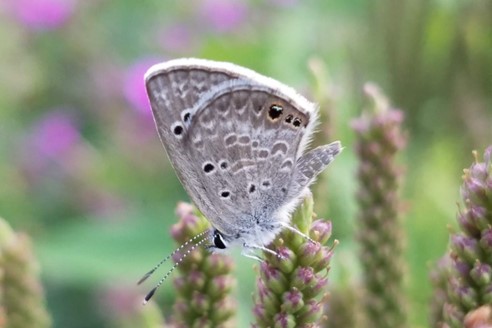Colorado is home to dozens of butterfly species (not to mention what seems like a billion moths). These colorful, large-winged insects are important pollinators and vital to the eco-cycle, making butterfly-friendly gardening a simple and effective way to contribute to sustainability.
Of course, not all gardens are created equal when it comes to biodiversity and plain ol’ bug grub. Some gardens act as a local watering hole for frequent neighborhood fliers while others fail to entice the right type of insect.
To gear your garden to monarchs, painted ladies, checkered skippers, and the rest, try the following tips:
Plant Native Foliage
Just as people enjoy their favorite regional food, so do butterflies. Both butterflies and caterpillars prefer feasting on native plants, as these plants best provide them with the nectar they need. Caterpillars are the ultimate picky eaters, so having the right host plants in your garden ensures they can grow up and be their best selves.
In Colorado, native plants include orange milkweed, arrowleaf balsamroot, chokecherry, golden currant, serviceberry,, common gaillardia, aspen fleabane, and rabbitbrush. Different butterflies have different palates, so plant according to whatever species you’re hoping to attract.
Check Your Colors and Your Bloom Times
Bright colors don’t just liven up your garden; they attract insects, as well. Butterflies are especially attracted to flowers that are red, yellow, orange, pink, and purple. They also like foliage with large and flat petals or short and tubular flowers.
Butterflies need consistent nectar, which makes the bloom time of your plants important. Vary your garden so that it includes flowers that peak at different rates. That way, there’s always something on the menu.
Avoid Insecticides
It’s no surprise that insecticides are bad for butterflies (and you too, for that matter). These poisons are formulated to repel, hurt, or kill certain insect species, damaging their nervous systems or exoskeletons. Using insecticides on your flowers, or anywhere in your yard, poses a threat to our flitting-winged friends. Even some insecticides that are butterfly-friendly can be deadly to caterpillars, damaging the butterfly population before it can begin.
Provide a Landing Pad
Some butterflies can fly up to 100 miles a day…that’s a lot of cardio! With so much movement, butterflies need a place to rest. Sun-lit flat stones or level rocks can make wonderful landing spots for butterflies to relax and warm their wings, elements that are essential to a safe flight.
Use the Sun
Full-sun plants need a minimum of six hours of direct sunlight to reach their blooming potential and produce enough nectar for an all-you-can-eat butterfly buffet. Therefore, be sure to plant your flowers accordingly and locate areas in your yard prone to plenty of sunshine. Butterflies aren’t likely to be regulars in a shade garden.
A butterfly-friendly garden doesn’t just increase the visual appeal of your backyard, it gives you a chance to play an important role in preserving mother nature, as well. Follow these tips, as well as this guide written by Amy Yarger at the Butterfly Pavilion to make your garden the go-to place to get nourished through nectar. Backyard butterfly gardens are a key part of a ground-breaking sustainability initiative – Independence is working with Butterfly Pavilion to become a Pollinator District, a connected community conserving habitat for butterflies and other pollinators.
Independence in Elizabeth, Colorado, offers beautiful new homes on acres of open space. With a focus on sustainability and purposeful amenities, it strives to introduce a one-of-a-kind way of life to this generation and beyond.
Photo: Plebejus melissa on Verbena hastata, courtesy of Amy Yarger

